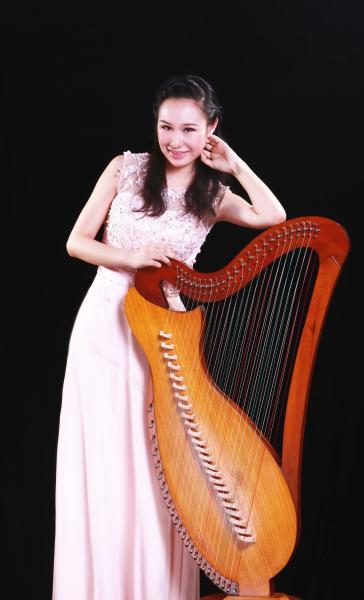The development and classification of Konghou
The ancient konghou can be roughly divided into vertical konghou and lying konghou. Among them, the early Lying Konghou appeared in the state of Chu in the Spring and Autumn Period, and has the same origin as the Guqin, but its long resonance box panel has the same taste as the pipa, which is the main difference between it and the qinse in shape; or percussion.

The vertical konghou evolved from the bows of ancient hunters. It is the oldest stringed musical instrument born with the birth of the earliest human civilization, with a history of more than 5,000 years.
By 1200 BC at the latest, the vertical konghou had basically been finalized (there has been no major change in the following two thousand and several hundred years). Later, it was introduced to Central Asia and India through Persia, and it was popular in Xinjiang in my country before the Qin Dynasty. After Emperor Wu of the Han Dynasty opened the Western Regions, the vertical Konghou was slowly introduced into the Central Plains—in fact, it was called Konghou from the east to China, and called Harp from the west to Europe. It’s just that in modern times, we Chinese have set a translation name for “harp”.
The current tuning konghou is not an antique, in fact, it is a new musical instrument that has been innovated by Chinese musical instrument reformers since the 1970s, combining the harp and guzheng (there are also some pipa and guqin). Its playing techniques are mainly based on the playing skills of a variety of ethnic plucked instruments, and draw on the playing techniques of the harp.
The appearance of the modern Konghou is different from the harp by several features: the harp has a single row of strings, and the Konghou double row of strings; the long box-shaped resonance box of the harp, the lute-shaped resonance box of the harp; the side of the resonance box of the harp is bare, and the left and right sides of the resonance box of the Konghou There is a row of wild goose columns; the harp columns are cylindrical, and the Konghou qin columns are generally square columns. In addition, as a kind of decoration, the one with the phoenix head at the top of the qin column must be a Konghou.
To be precise, the resonance box of the harp is a narrow trapezoid with relatively straight edges, and the lower end of the strings is directly connected to the slope of the resonance box, while the double-sided lute-shaped resonance box of the modern Konghou is larger and the sides are vertical. The strings are pressed across the geese to connect the lower end of the resonance box - it is indeed easy to confuse it with a harp from a distance.
Specifically, the harp resonance box is wide in the left and right directions, and narrow in the up and down direction, that is, it is relatively flat, and it is called "horizontal"; the modern Konghou resonance box is narrow in the left and right directions, and wide in the up and down direction, that is, it belongs to The side is flat, called "vertical".
The difference between the two comes from the respective requirements of single row and double row. In this way, when viewed from the front, the left and right sides of the harp resonance box are clearly protruding from the lower part of the harp, like the sides of a ship; when viewed from the front, the lute-shaped resonance box of Konghou is as wide as a fan; The shape is similar, but the lower end of the harp resonance box will be covered by the piano column, and its lower left or right corner will be exposed on the other side of the piano column, while the radian of the upper and lower edges of the Konghou sound box is different - the upper edge is normal It has a soft curve, and the lower edge is generally a straight protective strip; some Konghou resonance boxes protrude more towards the direction of the piano column, and the lower end of the piano column is "inserted" on the resonance box.
 渝公网安备 50010702504639号
渝公网安备 50010702504639号